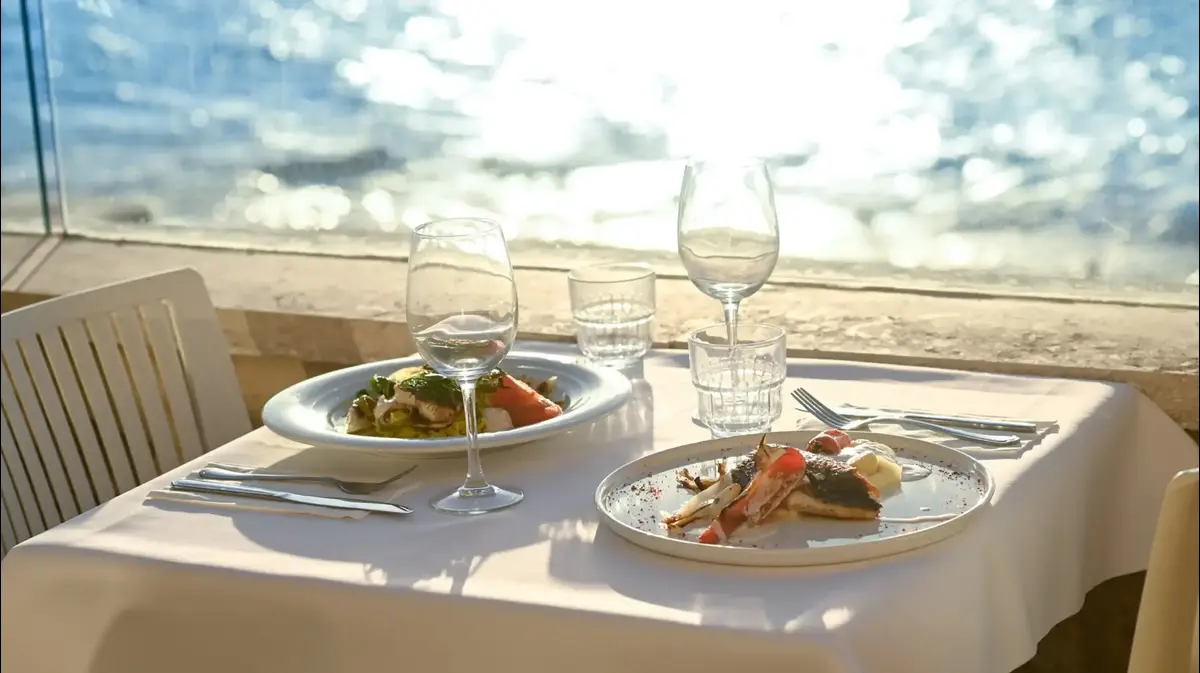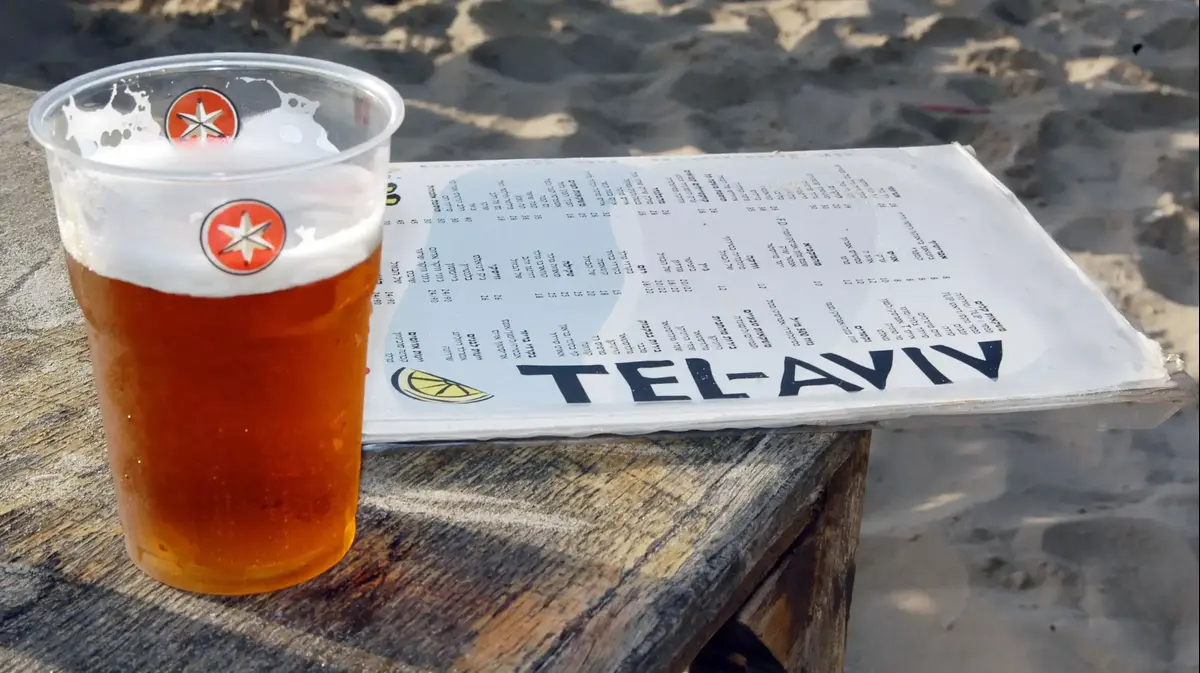Food
Reviews
Kamakura: Kosher-kosher, but God what a burger
Focused menu, precise dishes, lots of respect for Japan and Ramat Gan?
At first glance it seems that this restaurant is just looking for trouble
Tags
hamburger
A steakhouse
The stock exchange
kosher food
Kosher restaurant
Keenan Cohen
Wednesday, 28 July 2021, 06:00 Updated: 07:14
Share on Facebook
Share on WhatsApp
Share on general
Share on general
Share on Twitter
Share on Email
0 comments
Five facts about ice cream
Kopenhagen Thailand
Flakes with chicken and vegetables in a sweet and sour sauce
Or Spitz Confectionery, Tel Aviv
Shawarma Abu Adam, Qalansawa
Bushwick, Tel Aviv
Vineyards in the area of Tavor Winery
Cookie checked
Story in a minute: Ben & Jerrys come out of the closet
Cristiano Ronaldo moves two bottles of Coca-Cola in protest ...
Report by Daniel Ziri from New York - Chef Anthony's Suicide ...
Aliza Gabay prepares stuffed in Spanish style, festival ...
A tour of the Strauss Milky Factory (Shlomi Gabay)
Meet Kamakura, a kosher Japanese meat restaurant at the Indigo Hotel in the stock exchange complex in Ramat Gan, an opening line in which almost every ingredient is potential for a culinary mine.
To the delicious Instagram page of Walla! Food
that opens with "meats"? Despite the great awakening of the Israeli palate to the worlds of quality meat in recent years, in the vast majority of cases, even if one succeeds in choosing the type of beef, the source of the cuts and the degree of making, it can be said that in many cases it is simply grilled More beautiful.
"Japanese"? This is the 22nd catch of the restaurant world - go for the original hard-core, and you'll have a hard time hitting the local flavor. Turn to the worlds of ramen and sushi, and how are you different from any of the "Asians" of Gush Dan?
"Kosher" ?, I really need to explain to you why Japanese and "kosher" cuisineDo not go together? From the extensive use of pork in its parts to the abundance of fish and seafood - all are disqualified at the entrance.
And finally, "a hotel in the stock exchange complex in Ramat Gan."
Come on, we can think of more attractive places to spend an evening.
And somehow, everything worked out in the end on the most delicious side.
Everything from everything to everyone
The burger that managed to defeat me
To the full article
Free of clichés.
Kamakura (Photo: Walla !, Keenan Cohen)
If your intention is to find a place to eat a light dinner and move on
The realization that someone has taken the business here with abysmal seriousness begins as soon as the curtains separating the lobby from the seating area are closed.
The space is not large, and by the time we arrived it was still empty, but you can see how during busy hours it becomes quite busy to sit here.
The feeling is even more intimate due to the dark walls in wood paneling that makes you crave cigars and cognac, and the fabrics on which the symbols of classical Japan are embroidered with metal wire.
Mostly there is a sense of evading the design clichés of “Japanese restaurant”, and a sense of place that respects the tradition of meticulous hospitality down to the smallest details.
"Hospitality" and "small details" are also what will accompany the continuation of sitting here.
If your intention is to find a place to have a light dinner and move on, you may want to give up in advance.
This restaurant is more than a "ready-to-eat food and beverage business."
It starts with serving hot towels to refresh and clean your hands, continues with a reception with sake glasses, and ends with a very lean menu featuring 11 starters and 8 mains, with no changes, during which it is committed to food, though a little less flexible in front of the diner.
A name blown up, and a surprise.
Goma Kabato in Kamakro (Photo: Walla !, Keenan Cohen)
We order the "Kaisiki" tasting meal, a term that originally describes a meal consisting of lots of small dishes, with each one behind them with thought, careful preparation and precise serving.
In other words, gourmet, centuries before Europe talked about this little crushed concept.
This thought is reflected in the dishes themselves as well as in the order in which they arrive at the table.
Kamakura, the Japanese city after which the restaurant is named, has served as a political and commercial center for centuries.
The meetings she convened between farmers, fishermen and traders created a new dietary mix, and a place where combinations of carbohydrates and proteins began, and between different raw materials from the land, air and sea.
This meal, too, with its 8 dishes and dessert, makes for a journey, and we were ready to go.
Overall tahini.
seemingly
Slices of salmon sashimi with soy and chili featured fish in a precise pickle that slides with juiciness, adds spiciness and is seasoned with the subtle saltiness of soy.
The second dish was a fish tartare that sat on nori seaweed in tempura and wasabi avocado cream, defined by the Chancellor as a "dream bite" that combines freshness (tartar), crispiness (seaweed in tempura) and a bite (wasabi).
From the sea we moved to land.
Tandoori eggplant is a hybrid between Asian inspiration and local vegetables.
The mounds of cashew-coconut cream on it and the spicy tandoori puree underneath it blended wonderfully with the eggplant flesh.
For the next dish.
"Goma Kabato" is a name blasted for roasted cabbage and topped with a drizzle of goma, a delicate Japanese tahini with a delightful spicy sweetness.
For all its simplicity, it was one of the big surprises of the meal because it illustrated how proper and invested care in basic ingredients produces a great dish.
The highlight of the meal.
Kamakura's hamburger (Photo: Afik Gabay)
This is a meal that is a celebration of flavors, adventure and a kind of experience that needs to be approached with an approach of experience
And from the plant to the animal. "Manchi Casto" turned out to be rib meat balls in double tahini, with leeks, wrapped in panko. The quick frying retained the strong flavors of the meat and brought out from the mixture of spices and ginger flavors captured in the crispy shell.
Sirloin tataki had reddish thin strips in the center and seared in the shell, topped with salsa salsa and crispy garlic crumbs. Each slice of them was a combination of salsa freshness with intense flavor and a succulent crunch.
Then came the Hambago, oh the Hambago. We know our burger is packed in a bun. not here. Meatball in coarse tahini was served on pear sauce and topped with a soft-boiled egg. This dish was the main contender for the highlight of the meal. The same burger, in such a different approach, balanced and rich in flavors.
Last was a mullet breast dish with nectarines and pumpkin cream. This is a piece that requires on the one hand a determined activation of the jaw muscles,But it provides a decent return - its swimming in the sauce means that each chew releases more flavors of those sweet nectarines.
The dessert, a citrus and mousse nectarine mousse, was sour, refreshing and delightful, and the mango whipped cream on top disappeared like a cloud in the mouth, leaving room for a resounding basil oil finish.
This is a meal that is a celebration of flavors, adventure and a kind of experience that needs to be approached with an approach of experience.
The value of the 240 shekels here is not in terms of quantity and components, but more in the added value of thought, precision and meticulousness.
More chewing, more flavors.
Kamakura's Mollard (Photo: Maiden Moore Alon)
The elephant provoked a great deal of controversy at the table, and put an end to the Israeli perception about the amount that is expected to be found on a plate in relation to such an amount.
Apart from the tasting meal, two of the place's intriguing dishes were also ordered - truffle tuna from the first (NIS 65) and beef fillet from the mains (NIS 174).
The delicate chunks of tuna were lightly seared and rolled up, topped with black pepper and truffle sauce. Each collection of such a slice to the mouth was a de-noor distillation of juiciness from the tuna with the aroma of light smoking and the depth of the sauce flavors. This is a classic entree in its lightness and richness, which whets the appetite.
The elephant mentioned that in Japanese cuisine the emphasis is on quality and not on quantity. It was placed on corn cream and miso flavored, with shiitake mushrooms and porcini stock next to it.
It was a dish that caused a great deal of controversy at the table.
It stretches to the limit the Israeli perception regarding the amount that is expected to be found on a plate in relation to such an amount.
I really appreciate the Holstein cows (the famous dairy cows) that the restaurant owners accompany growing in the Golan, the prolonged aging and burning on Japanese oak coals in the josper oven, but I found the meat a little too salty, a saltiness that did not characterize the delicacy of the other dishes. .
The Chancellor, as usual, looked straight ahead and made it clear that my palate was good for two-day-old bread with chocolate for spreading fur, no more.
For her, this dish was perfect.
We agreed not to agree.
Quality and not quantity.
Kamakura's elephant (Photo: Maiden Moore Alon)
In conclusion, the tasting dish is an excellent arrangement for a kind of "speed-dating", with wonderful skills of the restaurant chef, and an excellent starting point for the sequel.
As for the other dishes, the meats are excellent, but no less than them the magic here is in the sauces and combinations.
Look for these on the menu and they will guide you to the right dish.
If I have to sum up Kamakura, one can liken the business to a trip to Japan.
You know it will not be cheap, and you are definitely not going there to do a tummy tuck at a hotel and load up on half a buffet.
You travel to experience, and the deal between you and her is not for the familiar, the expected and the routine, but for this experience, experience and openness that you will encounter something different.
Kosher but successful?
Among the religious public, the issue of the training of Tzohar is a considerable controversy, and most of it does not revolve around matter-of-fact clarification and familiarity with the organization, its goals, its way and the people who make it up.
Behind Kamakura, which originally opened about two months before the outbreak of the corona and has since been launched twice, is a group of "writers" who joined Erez Atzmon and Alon Aharonovitch. The latter sat down with us and pulled out answers to every question, from the concept level, the history of Japan, to the process of preparing the dishes designed specifically for the restaurant.
The man moves between a very thorough understanding of restaurants, raw materials, customer experience and Japanese culture. I ask him about the issue of kashrut and the three challenges she posed to them. The first of a restaurant in general, the second of a Japanese restaurant and the third of the choice of Tzohar organization and not the local rabbinate.
The answer to the first question is very simple - they did not want to work on Friday-Saturday. We forgot that this is such an obvious answer and so legitimate.
On the subject of materials he admits that this was a very difficult adaptation. The variety and availability of fish and other seafood in Japan was something that was not easy to replace with local solutions. This forces the ability to produce interesting sauces and accompaniments to the dishes. The second challenge was how to translate Japanese cuisine that is fundamentally expensive into something that is not unusually expensive, with all these limitations.
Regarding the training of Tzohar, here too the answer is very simple and lies in the very different approach of the organization to the issue of training. For those who are not in the details, Tzohar unites under it a Zionist rabbinical leadership in an approach of accepting and inclusive Judaism, which seeks the common and the author, without compromising the halakhic requirements.
The challenge of running a meat restaurant in a hotel open on Saturdays where the restaurant space is used in the morning as a dining room and fed from a dairy kitchen (completely separate) was something they simply could not bridge with the local rabbinate. At noon they analyzed the constraints and found the relevant halakhic solutions.
Among the religious public, the issue of Tzohar's kashrut is a considerable controversy (due diligence: my father is a member of the organization and organizes canopies within its framework), and most of it does not revolve around clarifying matters and getting to know the organization, its goals, ways and people.
To me, however, and perhaps precisely because of this, it is an important organization with a role that significantly deviates from the technocratic principles of halakhic supervision.
The small print
Name:
Kamakura
Location:
Ahliav 5, Ramat Gan
Kosher:
Noon
Vegetarian options:
Medium.
4 In the first courses, a single course in the main points
:
4/5 domes
Share on Facebook
Share on WhatsApp
Share on general
Share on general
Share on Twitter
Share on Email
0 comments















